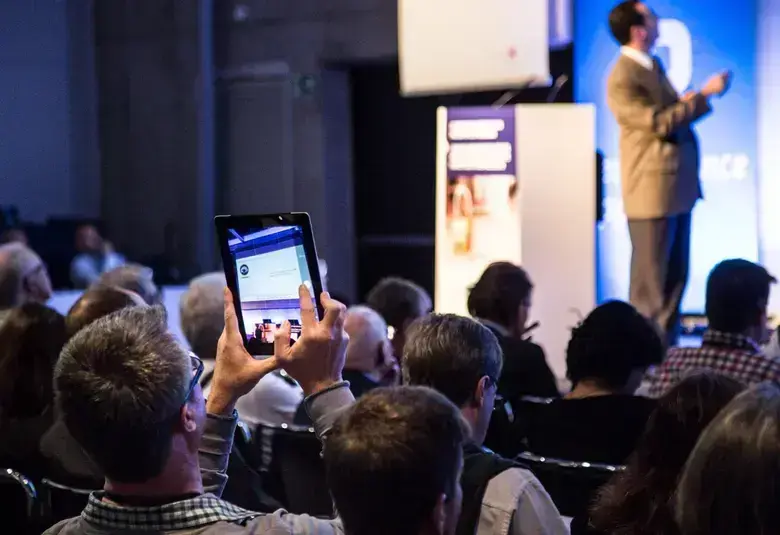Evidence supporting a role for inflammation and pro-inflammatory mediators in the pathophysiology and treatment resistance of depression was presented at APA 2019.
Could these findings lead to the identification of new biomarkers and new treatment targets for depression?
이번 2019년 미국정신의학회 연례 회의(APA 2019)에서는 우울증의 병태 생리와 치료 저항성에 대한 염증 및 염증 유도 매개체의 역할을 설명하는 근거가 제시되었습니다.
이러한 발견들이 과연 우울증에 대한 새로운 바이오마커와 치료 표적 규명으로 연결될 수 있을까요?
What is the role of inflammation in the pathophysiology of depression?
염증이 기분장애의 병태생리에 어떠한 역할을 하는가?
How does genetic vulnerability, an important contributor in many cases of major depressive disorder (MDD), schizophrenia and bipolar disorder, contribute to changes in brain circuitry, asked Professor Charles Nemeroff of the University of Texas at Austin, TX. This has been a fundamental question within past and future research.
텍사스 오스틴 텍사스 주립대학교의 찰스 네메로프(Charles Nemeroff) 교수는 다수의 주요우울장애(MDD), 조현병, 양극성장애 사례의 주요 원인인 유전적 취약성이 뇌 회로의 변화에 어떤 영향을 미치는지에 대한 질문을 던졌습니다. 이는 이전과 마찬가지로 앞으로도 다루어야 할 근본적 의문입니다.
Understanding genetic disease susceptibility provides opportunities for prevention, while molecular and imaging markers provide targets for therapeutic interventions
유전적 질환 감수성을 이해하면 예방의 기회가 열리고, 분자 및 이미징 마커는 중재 치료의 표적을 제공할 수 있습니다.
Ultimately, MDD and anxiety are about how the brain responds to the environment, he said. The effect of genetic sequence variants and variable gene processing on cellular molecular pathways impact activity in the emotion processing circuitry, resulting in the behavioral, clinical phenotypes.
주요우울장애와 불안감은 궁극적으로 뇌가 어떻게 환경에 반응하느냐에 관한 문제라고 네메로프 교수는 말했습니다. 여러 유전자 서열 이형(genetic sequence variants)과 가변적 유전자 발현(variable gene processing)이 세포 분자 경로(cellular molecular pathways)에 미치는 영향은 감정 처리 회로 활동에 여파를 미치고, 그 결과로 행동학적 및 임상적 표현형(clinical phenotypes)이 나타나게 됩니다.
Understanding genetic disease susceptibility provides opportunities for prevention, while the molecular and imaging markers provide targets for therapeutic interventions before the development of clinical manifestations, Professor Nemeroff added.
이때 유전적 질환 감수성(disease susceptibility)을 이해하면 예방의 기회가 열리는 한편, 분자 및 이미징 마커는 임상 징후 발현 전 중재 치료를 위한 표적을 제공할 수 있다고 네메로프 교수는 설명했습니다.
Is inflammation a biomarker in major depressive disorder?
염증은 주요우울장애의 바이오마커인가?
Cytokine activation produces depressive-like symptoms
사이토카인 활성화는 우울증과 유사한 증상을 초래합니다
Just as for many physical diseases, such as cardiovascular disease and cancer, inflammation and an activated innate immune response appear to play a role in the pathophysiology of MDD, explained Professor Nemeroff, because patients with MDD have:
네메로프 교수는 심혈관 질환, 암과 같은 신체 질환의 경우와 마찬가지로 염증 및 활성화된 선천 면역 반응(innate immune response)이 주요우울장애의 병태 생리에 영향을 미치는 것으로 보인다고 말했습니다. 이에 대한 근거로 주요우울장애 환자들이 다음과 같은 특성을 나타낸다고 설명했습니다.
- increased peripheral blood and cerebrospinal fluid innate immune cytokines — interleukin (IL)-6 and tumor necrosis factor (TNF)-α
- increased acute phase reactants — C-reactive protein (CRP)
- increased chemokines
- increased cellular adhesion molecules
- 말초 혈액 및 뇌척수액의 선천 면역 사이토카인들, 즉 인터류킨(IL)-6 및 종양괴사인자(TNF)-α의 증가
- 급성기 반응체인 C-반응성단백(CRP)의 증가
- 케모카인의 증가
- 세포 부착 물질(cellular adhesion molecules)의 증가
These inflammatory markers decrease with successful antidepressant therapy. However, cytokine activation resulting from, for example, flu-like illnesses, produces the depressive-like symptoms of anhedonia, malaise, hypersomnia, anorexia, social withdrawal, poor concentration, hyperalgias, and weakness.
항우울 치료가 성공적으로 이루어지면 이러한 염증성 마커들이 감소합니다. 그러나 예를 들어인플루엔자 유사 질환 등으로 인해 사이토카인이 활성화되면 무쾌감증, 권태감, 과다수면증, 거식증, 사회적 위축, 집중력 저하, 통각과민, 무기력 등 우울증과 유사한 다양한 증상이 야기됩니다.
Further support for an inflammatory role in MDD have been provided by a systematic review and analysis demonstrating an association between CRP, IL-6 and MDD,1 a systematic review highlighting the link between inflammatory cytokines and suicidal behavior,2 and a study showing an increased risk of inflammatory bowel disease in patients with MDD that may be mitigated by the use of antidepressants.3
주요우울장애에 대한 염증의 영향을 설명하는 또 다른 증거들은 CRP, IL-6, 그리고 주요우울장애 간의 연관성을 연구한 체계적 문헌 고찰 및 분석,1 염증성 사이토카인과 자살 행동의 연관성을 연구한 체계적 문헌 고찰,2 주요우울장애 환자의 염증성 장 질환 위험률이 증가하는 경우 항우울제로 완화할 수도 있음을 밝혀낸 연구 등에서 확인할 수 있습니다.3
Effects of pro-inflammatory cytokines in the brain
뇌 내 염증 전염증성 사이토카인의 영향
Is there a potential role for pro-inflammatory cytokines in depression and depressive symptoms?
전염증성 사이토카인이 우울증 및 우울 증상에 미치는 잠재적 영향이 존재하는가?
In suggesting a potential role for pro-inflammatory cytokines in depression and depressive symptoms, Professor Nemeroff highlighted:
네메로프 교수는 우울증 및 우울 증상에 미칠 수 있는 전염증성 사이토카인의 잠재적 영향에 관해 설명하면서 다음과 같은 부분에 주목했습니다.
- access for cytokines released peripherally to the brain through leaky regions in the blood–brain barrier, active transport, and afferent nerve fiber (Vagus) transmission
- the cytokine network in the CNS, composed of microglia with neurons, expressing and producing cytokines and expressing cytokine receptors
- effects of cytokines on neurotransmitter turnover, neuroendocrine function and behavior
- 말초에서 분비된 사이토카인이 혈액-뇌 장벽의 누출 부위(leaky regions), 능동 수송, 구심신경섬유(미주 신경) 전달을 통해 뇌로 접근
- 소교세포 및 신경세포로 구성된 CNS 내 사이토카인 네트워크의 사이토카인 발현 및 생성과 사이토카인 수용체 발현
- 신경전달물질의 생성과 소멸(turnover) , 신경 내분비 기능 및 행동에 미치는 사이토카인의 영향
A recently published article has demonstrated that defective inflammatory pathways in never-treated depressed patients are associated with poor treatment response, added Professor Nemeroff. Anti-inflammatory cytokine levels increased in both responders and non-responders. In contrast, the levels of five pro-inflammatory cytokine stabilized in responders, but continued to increase in non-responders. The authors concluded that patients with MDD exhibit remodeling of their inflammatory landscape.4
최근에 발표된 한 논문에 따르면 치료 받은적이 없는 우울증 환자의 불완전한 염증성 반응경로가 불충분한 치료 반응과 관련이 있다고 네메로프 교수는 덧붙였습니다. 항염증 사이토카인 수치는 치료 반응이 있는 사람과 없는 사람 모두에게서 증가했습니다. 반면, 5가지 전염증성 사이토카인의 수치는 치료 반응이 있는 사람의 경우 안정화되었으나, 치료 반응이 없는 사람에서는 계속해서 증가되었습니다. 이 논문의 저자들은 주요우울장애 환자의 염증 체계가 변화한다는 결론을 내렸습니다.4
The role of pro-inflammatory cytokines in treatment-resistant MDD is supported by another recent study cited by Professor Nemeroff, in which there was a significant relationship between the number of failed treatment trials and TNF, soluble TNF receptor 2 (sTNF-R2) and IL-6 (all p <0.05 in multivariate analyses).5
네메로프 교수는 치료 실패한 치료 횟수와 TNF, 가용성 TNF 수용체 2(sTNF-R2), IL-6 간에 유의적인 연관성이 존재한다(다변량 분석에서 모두 p <0.05로 나타남)는 사실을 밝혀낸 또 다른 최신 연구를 언급했습니다. 이 연구 역시 전염증성 사이토카인이 치료 저항성 주요우울장애에 미치는 영향을 뒷받침하고 있습니다.5
본 자료는 Global Lundbeck 의학부에서 선별한 콘텐츠이며, 한국룬드벡의 의견과 다를 수 있습니다.




